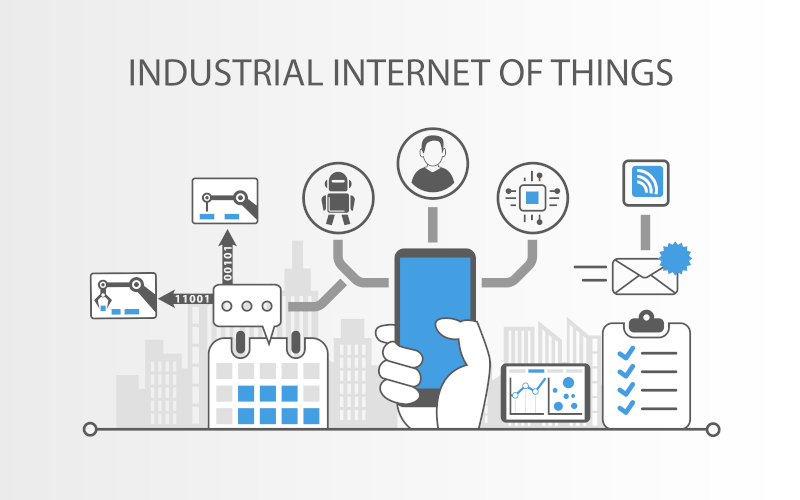
IoT networks are very useful for everyday life, but their use is not limited only to this type of environment; there are industrial environments where this type of networks can benefit connectivity between industrial devices and provide capabilities that other types of networks could not. The 3rd Generation Partnership Project or 3GPP developed the NB-IoT protocol, a protocol for when networks with higher performance, higher speed and high interconnectivity capacity between devices are required. This protocol can work both in IoT devices and in IoT devices in the industrial environment (IIoT).

The OPC UA (OPC unified architecture) communication protocol is the most modern standard presented by OPC Foundation. Currently, the OPC UA protocol is one of the most widely used in industrial environments, due to its ability to interconnect different devices, regardless of their base protocol and vendor.
Throughout this article, a technical assessment of the protocol will be conducted, explaining in detail the technical capabilities that allow a high level of cybersecurity to be implemented without causing performance losses in the devices.

Second part of the Top 20 mitigations for industrial environments. This part will focus on mitigations related to network architecture, industrial protocols, network configuration and vulnerability scanning.

The automotive sector is currently moving towards electric consumption, as society is becoming more and more aware of the problems that environmental pollution can cause.
One of the big challenges of this trend is how to charge electric vehicles, for which charging points are currently used.
But like most of today's technological devices, they will also need to have access to an Internet connection in order to be able to monitor in real time the use of the station, the customer's banking information, etc.
For this reason, in this article we want to talk about the different risks or cyber-attacks that these charging points may suffer and the problems they may cause, as this is a very important sector for society and one that is capable of managing very sensitive information

In recent decades, the need to control processes remotely to improve efficiency, productivity and accelerate decision making on industrial systems has led to the interconnection of operation technologies (OT) with information technologies (IT). This interconnection has given rise to a number of security risks in industrial control systems, and to meet these challenges, specific tools and technologies have been developed and adapted to help ensure cybersecurity in industrial environments. One such tool is the Security Operations Center (SOC).
In this article we will focus on the importance of advanced monitoring in a SOC OT.

Firmware analysis can help to uncover potential vulnerabilities that would otherwise never have been discovered.
Although there are multiple types of attacks on IoT and IIoT devices, this guide focuses on the firmware of these devices to check for potential vulnerabilities, using security testing and reverse engineering to allow for an in-depth analysis of the firmware.

In recent years, the constant technological evolution has made possible a large number of advances that would have been unthinkable years ago. In industrial environments, one of the latest developments that promises to stand out and is here to stay are virtual PLC.
The virtualization of these controllers will make it possible to decouple the hardware from the software, i.e. the software will be installed in the engineering stations, while the hardware will remain in another area outside the production area.

The Industrial Internet of Things (IIoT) has experienced considerable growth in recent years, providing crucial improvements. However, it also has some limitations in terms of consumption, security, cost or scalability. In this blog, we will see how the appearance of LoRaWAN in this area can solve part of those limitations.

A high percentage of devices developed for the industrial world have physical interfaces that allow secondary communications to be established. These communications allow the execution of important tasks such as the management of the devices themselves or changing the way they interact with industrial processes. Although in most cases it is necessary to have physical access to the device in order to use these interfaces, manipulation of the device through these interfaces allows attackers to manipulate the operation of the system without leaving any trace if there are no mechanisms to protect the asset from hardware hacking.
This article aims to show the most widespread physical interfaces in industrial devices and embedded systems in general. On the other hand, we want to show some attacks executed throughout history in the industrial world. These attacks, thanks to the physical manipulation of a device, have allowed attackers to achieve a great impact on the targeted industrial process

A growing number of industrial companies are adopting vulnerability management on their devices and systems, in order to perform this management in a correct and efficient way, the first step is to create an asset inventory or update it. Some companies are looking for vulnerability management services to stay on top of the latest cybersecurity issues affecting their assets. In addition, we are also noticing an increase in the availability of tools and their implementation for vulnerability management.



